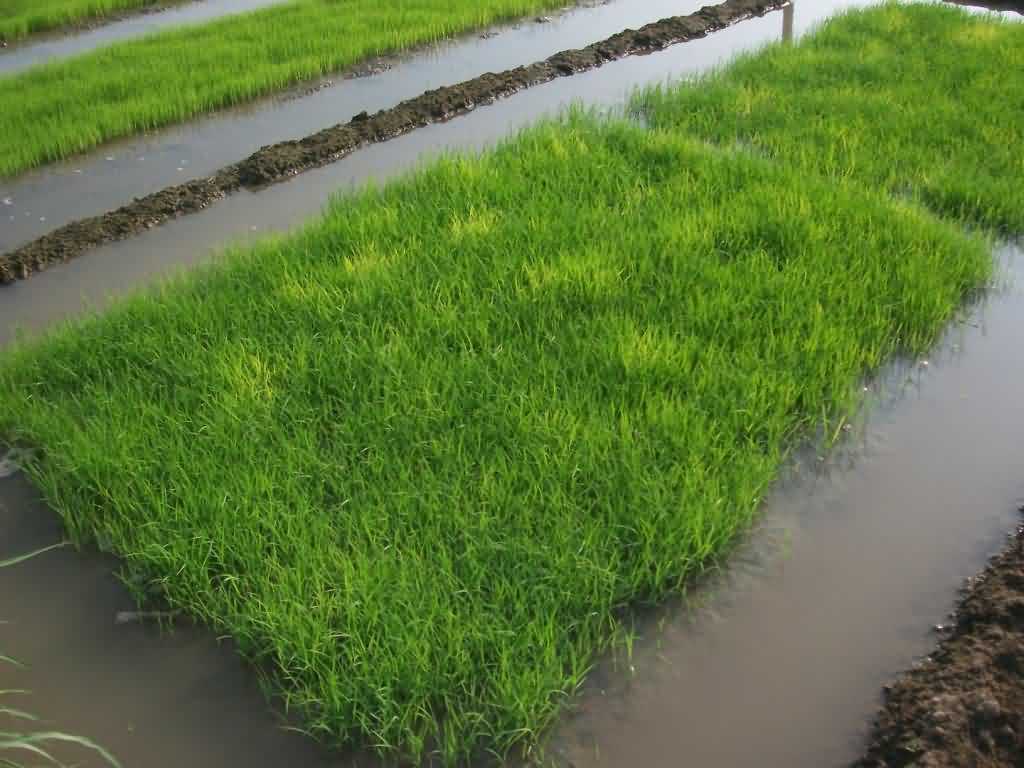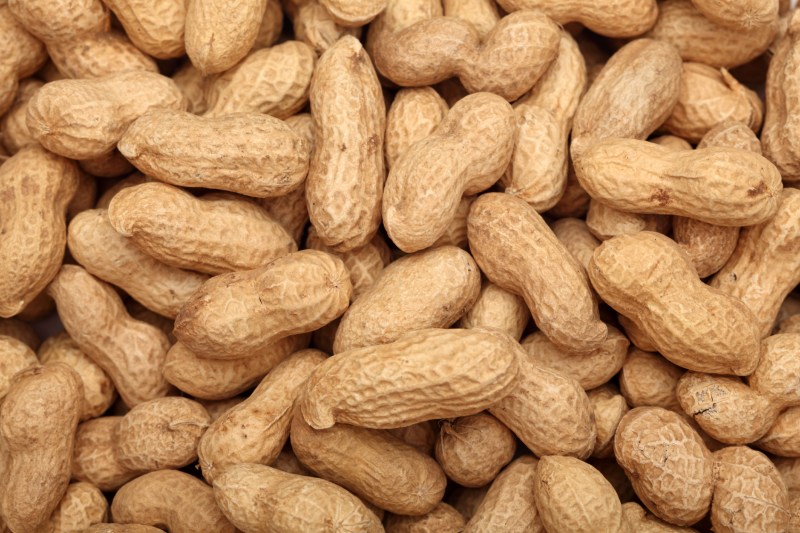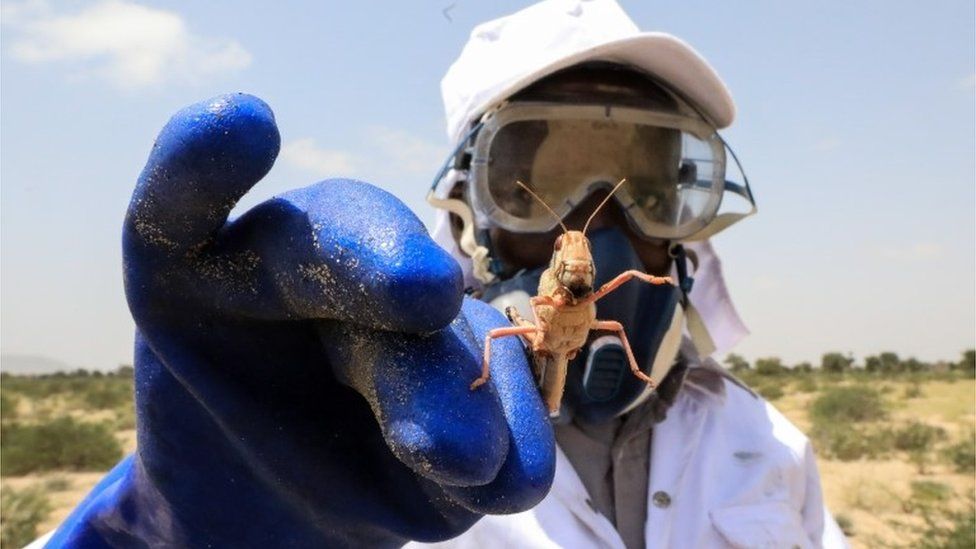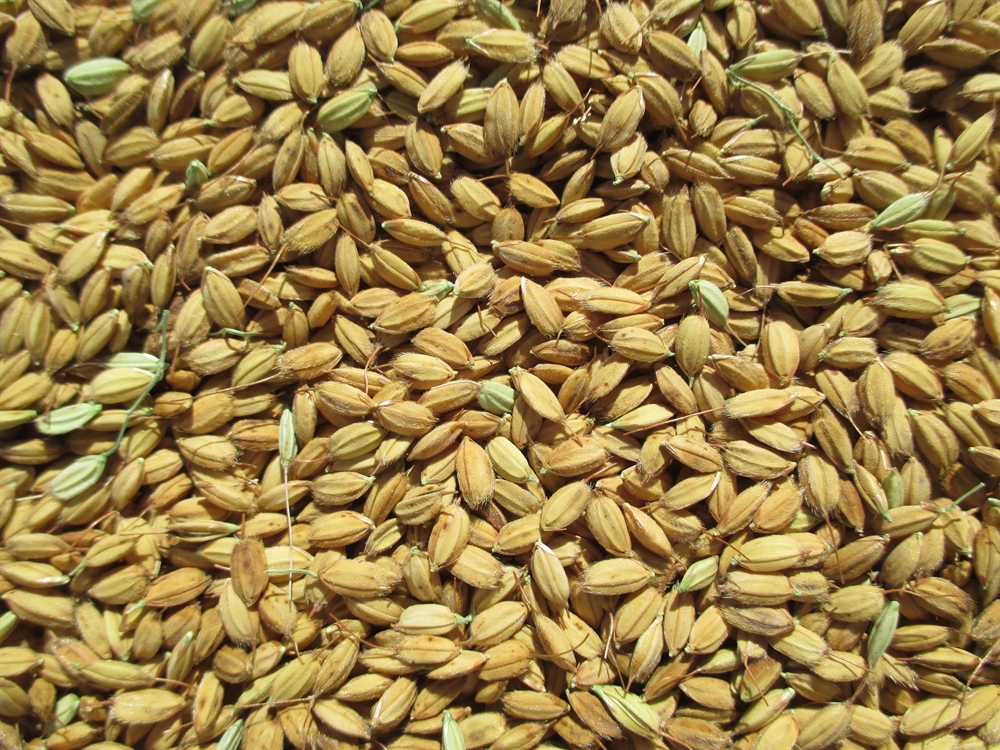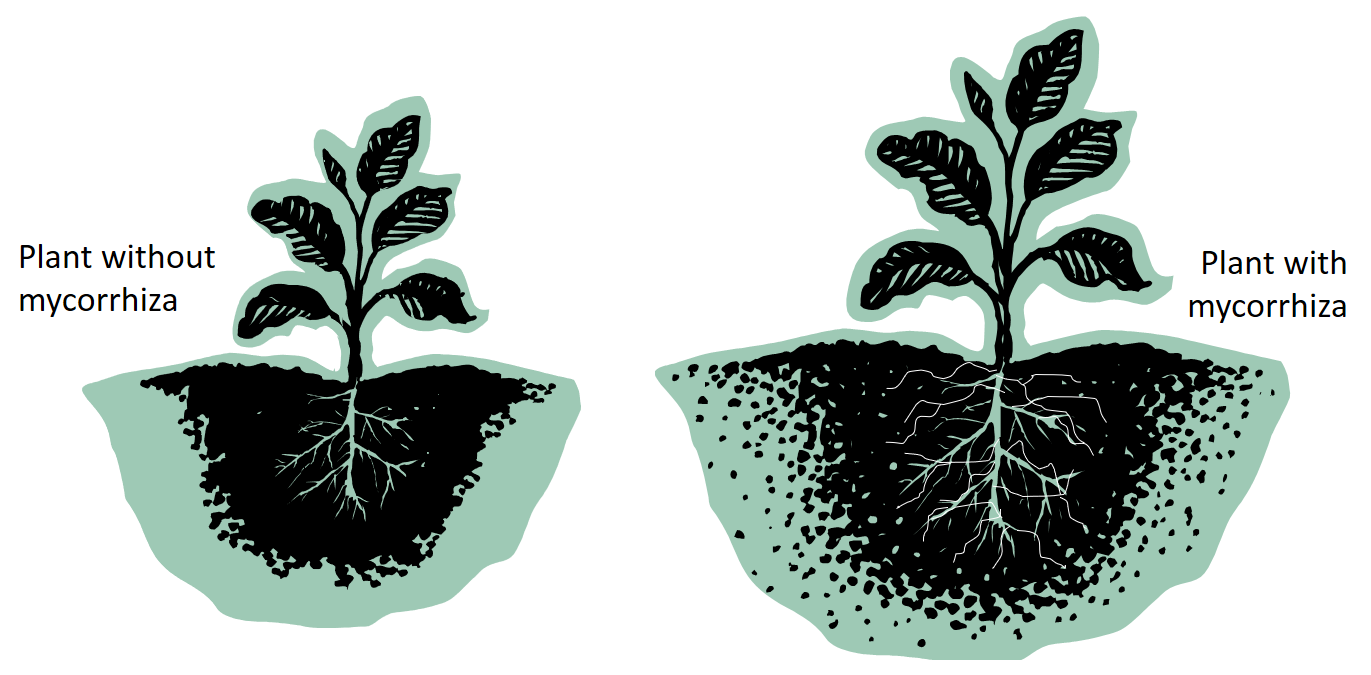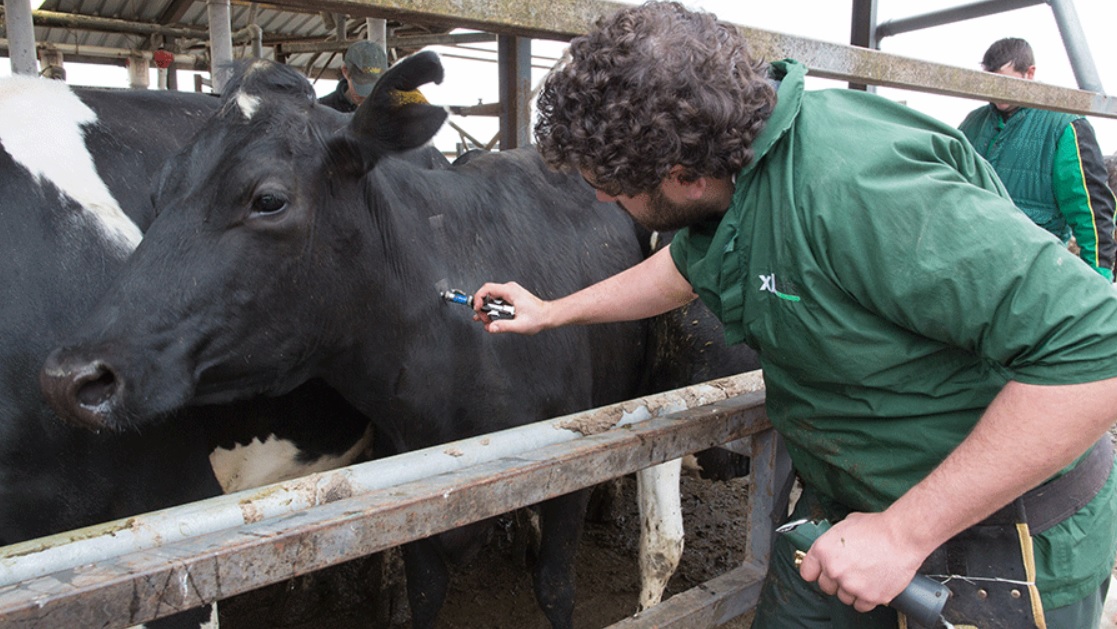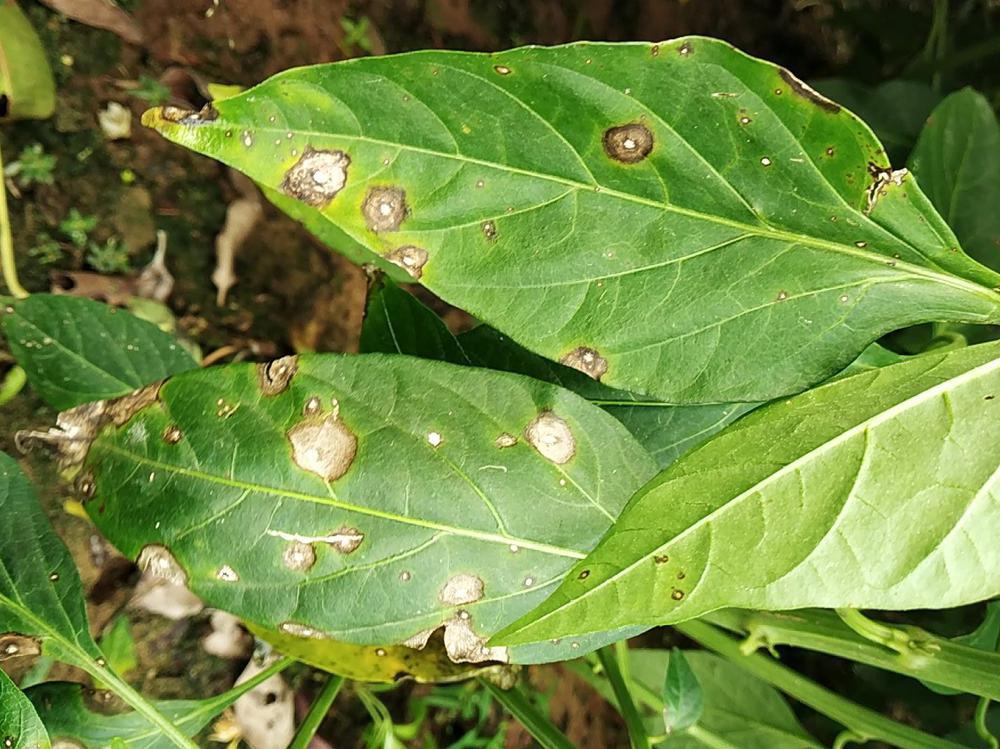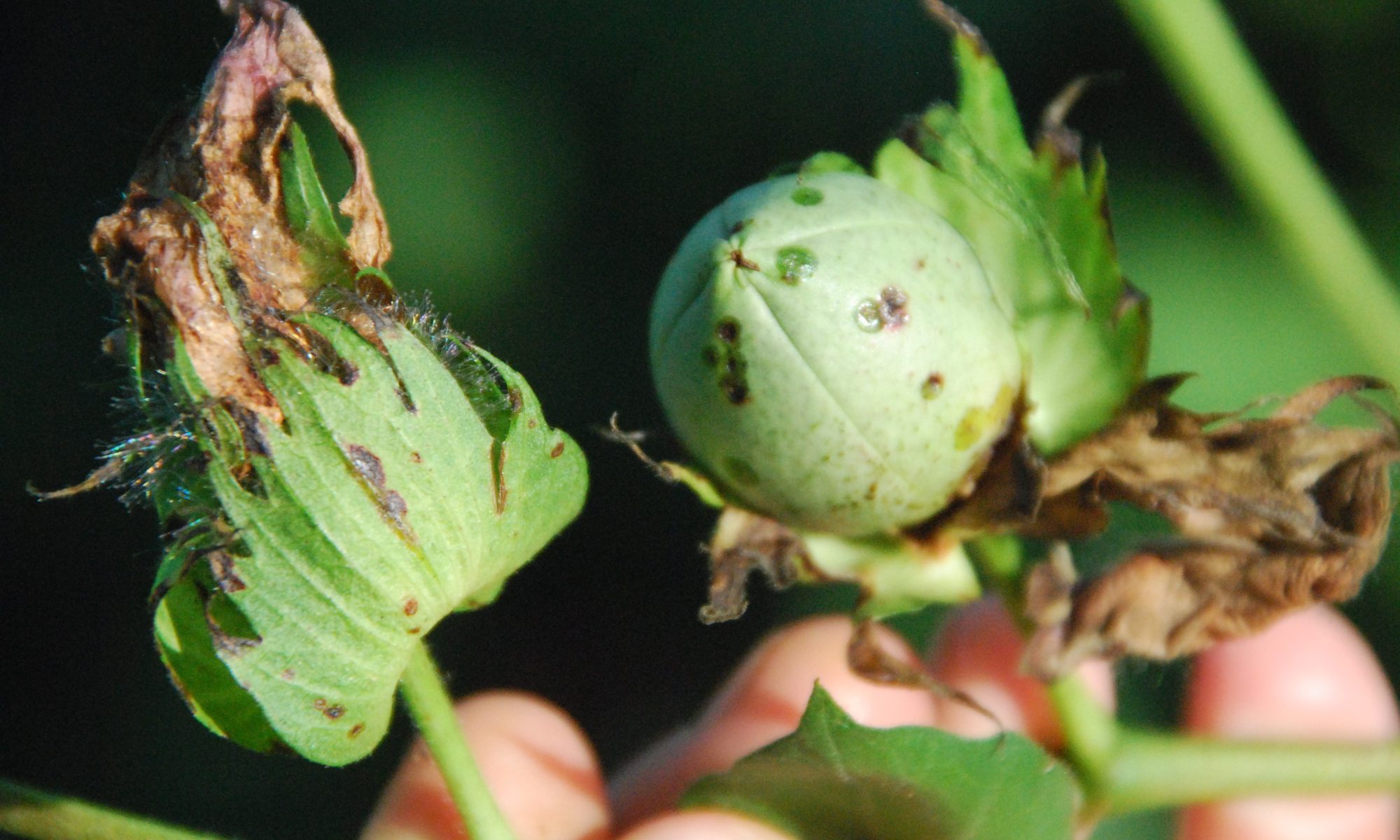- For preparing healthy and disease-free plants, proper drainage and high nutrient loamy soil is suitable and select the nursery near the source of irrigation.
- By plowing the nursery area 3-4 times in summer and leaving the field empty so soil-related diseases are greatly reduced.
- Nursery preparations are done one month before sowing. Weeds should be allowed to grow in the nursery area by giving water at an interval of 15 days and by plowing or
- Destroy the weeds by spraying nonselective weeds such as Paraquat dichloride 24% SL or Glyphosate 41% SL @ 1000 ml per acre. By doing this weeds will also be reduced in the main crop of paddy.
- Add 1 kg of composting bacteria to 50 kg FYM. Then irrigate the field and keep water in the field for two days.
- 1.5-2.0 meter width and 8-10 meter length should be kept for proper care of the nursery beds. The nursery requires an area of 400 square meters for 1 acre.
- In the nursery, the crop requires proper vegetative growth as well as root development. Spray urea 20 kg + humic acid in 3 kg per acre nursery.
- Sowing of paddy should be started as soon as the rain starts. Sowing time is best from mid-June to the first week of July.
Timely advice related to agriculture for farmers in the changing environment
Advice for moong crop:
Seeing the possibility of good rainfall at present, harvest the moong crop as soon as possible. Those whose mung bean crop is slightly green but the legumes have fully matured, harvest the best crop by spraying 100 ml per acre using paraquat dichloride 24% SL (ozone or gramoxone).
Use of composting bacteria:
As you know, the rains have happened before time, so there is a possibility of mold growth and to avoid this, the residues of the remaining crop in the fields need to be rot. For this, spread the speed compost with 4 kg and 500 grams of Trichoderma viridi (Rhizocare) per acre mixed with 50 kg of rotten cow dung in the field. If there is a waste of wheat, 45 kg of urea, and 10 kg of urea if green vegetables are used. Use them only when there is sufficient moisture.
If the farmer does light plowing with the above biological treatment, then chances of good results increase.
Tips for Chili crop:
At this time the safety of chili nursery is very important. Therefore, sprinkle 10 grams of thiomethoxome 25 WG (avidant or Areva) with Kasugamycin 5% + Copper oxychloride 45% WP (Konica) 30 g per pump to protect the plant from fungi and pests.
ShareLast date for registration of crop insurance scheme came, register soon and avail benefits
FasaDue to natural disasters like unseasonal rains, hail, drought, crops of farmers is often affected. The Prime Minister Crop Insurance Scheme protects farmers from these losses. The final date of the crop insurance scheme for this year has arrived. For Kharif crops, the farmers who want to avail of this benefit should insure their crops by 31 July 2020.
Indebted farmers who do not want to avail of crop insurance facility, can give written notice of it in their bank branch 7 days in advance. Apart from this, non-debtor farmers can also insure their crops. For this, these farmers will have to use CSC, bank, agent, or insurance portal.
How to apply?
You can apply for this through the bank and also online. To apply online, go to the link https://pmfby.gov.in/ and fill the form. For this application, a photo and identification card such as PAN card, driving license, voter ID card, or Aadhaar card is required. Apart from this, a document is also required for address proof, for which the farmer has to show the documents related to farming and the Khasra number. For the truth of the crop that has been sown, a letter of pradhan, patwari, or sarpanch has to be given. A cancellation check has to be given so that the claim amount comes directly into the account.
Source: Krishi Jagran
ShareHow to dig and storage Jayad Groundnut
- Jayad groundnut should be dug when the leaves of the plant start turning yellow and veins rise above the peanut bean and the inner parts become brown.
- Digging the field with light irrigation and after uprooting the plants from the land, make small bundles and dry them thoroughly in light sun or shade.
- Separate peanuts from plants. The mechanical Groundnut Digger is useful for reducing labor loss in groundnut digging.
- Careful drying should be done after digging to maintain proper storage and germination capacity in groundnuts as the germination potential declines if the groundnut is dried in strong sunlight.
- The moisture content in the matured grains should not exceed 8 to 10% before storage. Otherwise, aspergillus fungi in peanuts cause moisture, which is harmful to human and animal health, due to excess moisture.
- Fully dried beans should be stored in a ventilated place. Where they cannot absorb moisture or in each sack, storage by calcium chloride 300 grams per 40 kg seed rate.
- Protect from insect moths that are harmful during storage, so that the beans do not get spoiled during storage.
How to protect crops from Locust attack
- The locust party lumps the crops within a few hours, as well as eliminates all the greenery of the tree on which it sits. Therefore, upon seeing the locust party without delay, immediately inform the administration.
- To remove or drive them out of the area, they should be blown away by blowing sound equipment.
- Make a fire in your fields, bursting firecrackers, noising thali, drums, can also make a loud sound by removing the tractor’s silencer.
- If you see a bunch of locusts sitting in your fields in the evening, then cultivate the field at night. Apart from this, run the pillar behind the cultivator, iron pipe, or any other similar item through the dam. By doing this, the land behind will be flat again and the locust will die by pressing into it.
- The places where the locusts lay eggs can be destroyed by digging or by filling water or plowing. Or Malathion 5% powder should be burnt at @ 10 kg per acre.
- Nymphs of locust coming out of the eggs are not able to move in the first and second stages, so they should be destroyed. In the third stage, they start walking in the herd, so dig a trench about 2.5 feet deep and 1 foot wide in the walking direction so that Nymphs of locust fall in it and then destroy it by pressing into the soil.
- Locusts can be killed by spraying them with pesticides.
- For locust control, Chlorpyrifos 20% EC @ 480 ml or Chlorpyrifos 50% EC @ 200 ml or Deltamethrin 2.8% EC @ 200 ml or Lambda-cyhalothrin 5% EC @ 160 ml or Lambda-cyhalothrin 10% WP @ 80 gm or Malathion 50% EC @ 740 ml pesticides can be used on these locusts @ 200 liters of water per acre.
Seed treatment will be beneficial in paddy cultivation, know the method of treatment
- Fungal and bactericidal pesticides in Paddy control the fungal and bacterial diseases spread by seeds.
- To prevent the disease, 1 kg seeds should be treat with 3 gm Carbendazim 12% + Mancozeb 64% or 3 gm Carboxin 37.5% + Thiram 37.5% DS or 3 ml Thiophanate methyl 45% + Pyraclostrobin 5% FS.
- After that spread the seeds in a flat shady place and cover them with soaked jute sacks. Spray water over the sacks so that moisture remains. The seed will sprout after 24 hours
- Then sowing sprouted seeds evenly. Make sure that the seeds are sown in the evening because high temperature increases the chances of destroying germination.
What is Mycorrhiza and its importance in Chilli
- Mycorrhiza is an organic fertilizer that maintains a connection between fungi and plant roots. In this type of relationship, the fungus becomes dependent on the root of the plants and becomes an important component of soil-life.
- The use of mycorrhiza leads to better growth of roots.
- Mycorrhiza helps in the availability of phosphorus and other micronutrients from the soil for the plants.
- Mycorrhiza increases phosphorus availability from the soil by 60–80%.
- Mycorrhiza increases tolerance of the plant to drought by increasing the rate of water absorption by plants. Due to which it helps to keep the plants green.
- Hence, it plays an important role in increasing crop yield.
Free vaccination to protect Cow Descent animals from infectious diseases
Rainfall is coming and you will be aware that during the rainy season there is a fear of spreading many types of infectious diseases. Especially cattle and buffalo descendants are more prone to infectious diseases like Foot and Mouth and Brucella Disease. To prevent this, the central government is now starting a vaccination scheme, which can prevent the disease before it starts.
Under this scheme, all cow and buffalo descendants are to be vaccinated in different states of the country. The Madhya Pradesh government is also going to start vaccination before the onset of rain and about 290 lakh cows and buffalo descendants will be vaccinated here.
A provision of Rs 13 thousand 300 crore has been made for this scheme by the Government of India. Vaccination will be done twice a year under this scheme.
Source: Kisan Samadhan
ShareMeasures to prevent bacterial leaf spot disease in chilli crop
- The field should be free from old crop residues and weeds.
- Streptomycin sulfate 90% + tetracycline hydrochloride 10% W / W @ 24 gm / acre or
- Kasugamycin 3% SL @ 300 ml / acre or
- Spray kasugamycin 5% + copper oxychloride 45% WP @ 250 gm / acre in 200 liters of water.
- For this disease by biological means, spray 500 grams Pseudomonas fluorescens and 500 ml Bacillus subtilis in 200 liters of water per acre.
- Streptomycin should not be sprayed after fruit formation.
Preventive measures of Bacterial Blight in Cotton crop
- To avoid this disease, mix 2 kg of Trichoderma viride in 4 tons FYM and spray it in the field immediately or after the first rain.
- Streptomycin sulfate 90% + tetracycline hydrochloride 10% W / W @ 24 gm / acre or
- Kasugamycin 3% SL @ 300 ml / acre or
- Spray kasugamycin 5% + copper oxychloride 45% WP @ 250 gm / acre in 200 liters of water.
- For this disease by biological means, spray 500 grams of Pseudomonas fluorescens and 500 ml of Bacillus subtilis in 200 liters of water per acre.

